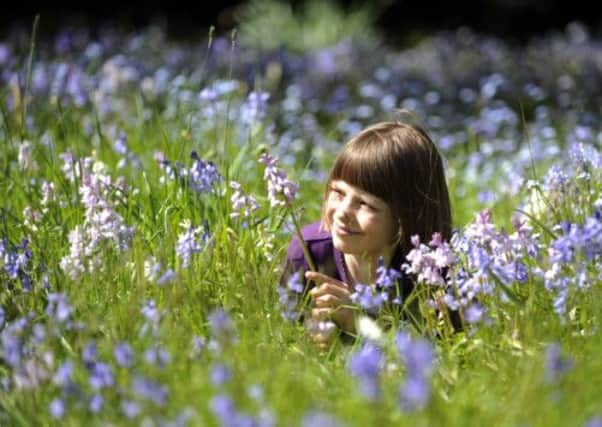Royal Botanic Garden: Pines lead public vote


It is perhaps no surprise that the iconic Scots pine (Pinus sylvestris) is currently in the lead with nearly 20 per cent of the vote. The well-loved Scottish bluebell (Campanula rotundifolia) follows with 13 per cent, while the rowan (Sorbus aucuparia) and Scottish primrose (Primula scotica) both hold 12 per cent. The silver birch (Betula pendula) is coming in fifth with 10 per cent.
Just asking around our own organisation, everyone has differing opinions and the outcome is likely to be a contentious issue. So far, I’m just happy to see my own favourite, the primrose, still hanging in with a chance. But, there is still time, voting continues throughout summer and autumn with the winning plants revealed later in the year. To place your vote, please visit www.rbge.org.uk/big5
Advertisement
Hide AdAdvertisement
Hide AdSo why does this survey matter? On one level it allows for some extended public engagement and encourages individuals to think about their environment and why plants mean something to them. On a more serious note it can help the Garden raise awareness of our native plants and projects being undertaken to conserve them.
Important
Why are native plants important? Plants are not “in” the environment, they are the environment. Without plants there is no life. The functioning of the planet and our survival depends upon plants. Those reading this article probably consumed plants for breakfast; your clothes are likely to contain plant-related materials and just look around the room where you are sitting. Yet, until plants are documented and researched, we cannot start to have an idea about what is rare or endangered, what provides habitats for insects, birds and other life forms, and what is useful to mankind.
There is still much work to be done. While Scotland does not have an extensive flora, many of the species we do have are vulnerable or endangered. This can be for a number of reasons ranging from climate change to shifting land uses and grazing.
For example, the oblong woodsia (Woodsia ilvensis), which was so popular with the fern-mad Victorians, is now only found as a few clumps in Scotland, the Lake District and Wales. The rare woodland plant whorled Solomon’s-seal (Polygonatum verticillatum), meanwhile, is restricted to ten locations on steep riversides in the southern Highlands where it often does not flower or set seed.
At the same time, we are still describing plants new to science. Take, for instance, the Catacol Whitebeam (Sorbus pseudomeinichii) from Arran or the dandelion (Taraxacum pankhurstianum) from the St Kilda archipelago. That’s just the higher plants: new species of lower plants – such as lichens and bryophytes – are also being described. All that without even mentioning the research being done in the separate kingdom of fungi.
Scientists work side-by-side with horticulturists and this collaboration provides the opportunity for rare and endangered native plants to be grown and studied, so establishing conservation collections.
Comprehensive database
The project involves significant collaboration with other organisations and private land owners to identify threatened species and collect seed for propagation. At the same time all accessions are catalogued to create a comprehensive database of threatened species. Whenever possible these species are then repatriated back into their native habitats.
All this happens under the Target 8 Project, an edict of the Global Strategy for Plant Conservation (GSPC), which outlines a total 16 “Targets” designed to halt the continuing loss of plant diversity around the world. Target 8 underscores the requirement for organisations such as RBGE to look after what is in our own backyard. From Shetland to the Borders, RBGE is taking a lead and aims to bring at least 75 per cent of threatened native species into its collections.
Advertisement
Hide AdAdvertisement
Hide AdSo, the ultimate goal of our Big 5 survey? We were keen to support the Year of Natural Scotland and, inspired by Scottish Natural Heritage’s Big 5 poll to identify Scotland’s favourite wildlife, we decided to champion the diversity of our country’s plants. The survey continues to be a fun and informative journey for us and if it encourages a few more individuals to think about the landscape around them then we should consider that a positive result.
• Dr Heather McHaffie is Conservation Officer at the Royal Botanic Garden Edinburgh
SEE ALSO: